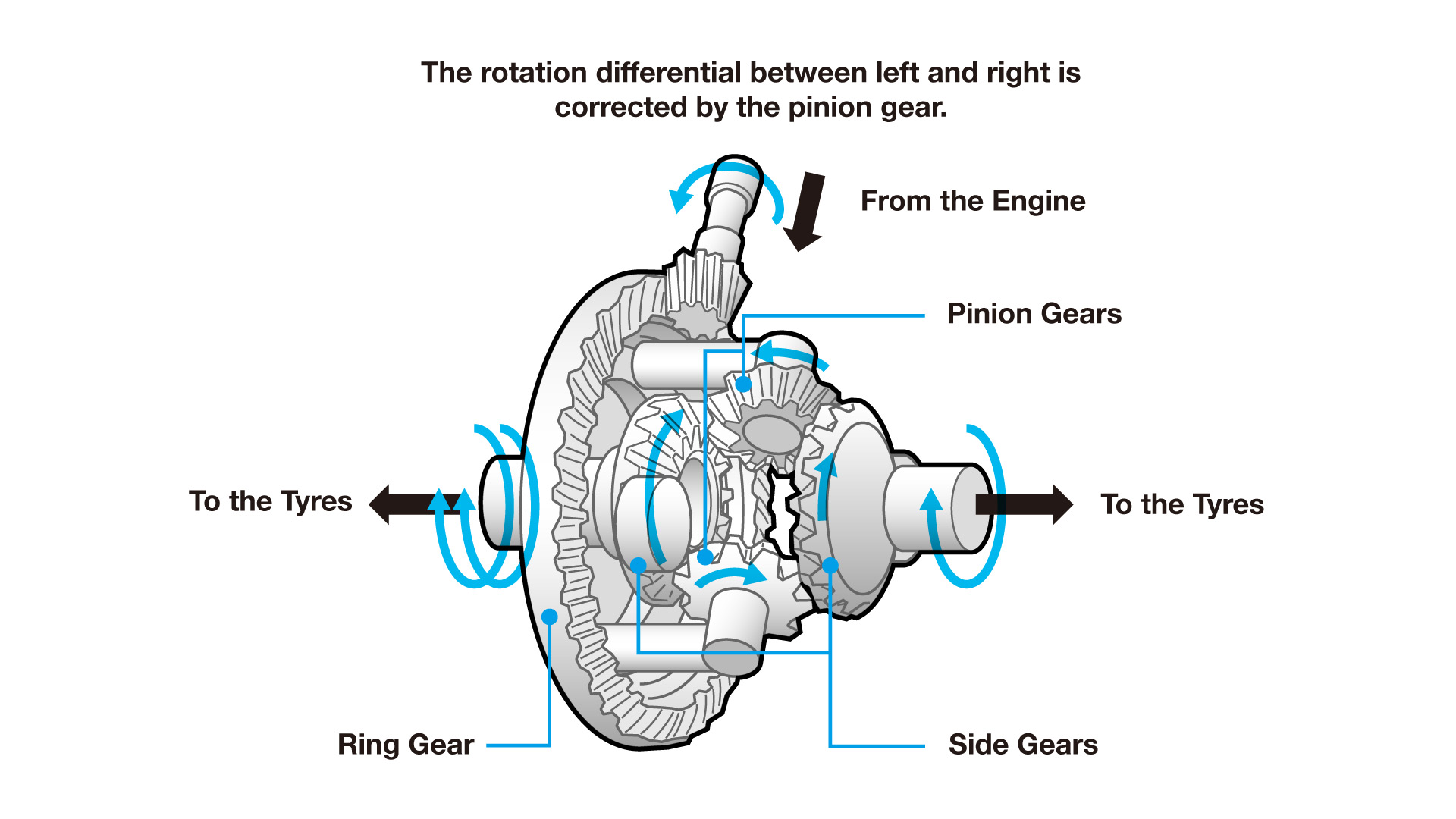Differential and Limited-Slip Differential
Mechanics 7
Controlling rotational differences between drive wheels
● Differential
When a car is turning, the tyre on the outside of the car travels a longer distance than the tyre on the inside of the corner, so there is a difference in the amount of wheel rotation. Without alleviating the impact of this rotational difference, the tyre on the inside will resist turning. The mechanism invented to resolve this issue is called the differential.

Fig. 7-1: While cornering, the tyre on the outside of a corner travels a longer distance than the tyre on the inside of the corner.
The differential gear is located between the drive wheels, together with the final gear. When the car is travelling in a straight line, it has no significant effect, but while the car is turning, it distributes more engine torque to the wheel on the outside that travels the greater distance.
While the differential is an important mechanism on standard roads, it can be a weakness for race cars on the track. This is because if one of the two drive wheels lifts off the ground, the drive wheel that remains on the ground ceases to receive engine torque. The wheel that is not in contact with the ground will spin freely because the differential will keep trying to distribute more drive force to the wheel that is turning more.

Fig. 7-2: Mechanism of the differential gear.
● Limited-slip differential (LSD)
This is where the LSD (limited-slip differential) comes in. This is a mechanism that limits the function of the differential when a certain amount of rotational difference exists between the left and right drive wheels. We will omit the very technical details here; simply put, by adding a mechanism that restricts the rotation of the side gears connecting to the left and right wheels, the LSD limits the effect of the differential so that both wheels will receive drive force.
There are various types of LSD available: multi-plate clutches, electronic controls, those that use the backlash of the gears, those that change the force produced in the axial direction to friction, and those that use the shear resistance of viscous liquids (the resistance produced by the shear inside the substance). Each performs differently and has its own merits.
While the LSD is useful when one wheel is stuck and slipping in mud or snow, in sports driving, it is mainly used to secure drive force and to improve control.

Fig. 7-3a: The difference between a car without an LSD (left) and with an LSD (right).

7-3b: With an LSD, differential motion between the left and right tyres is restricted, transmitting torque to the outer tyres.
